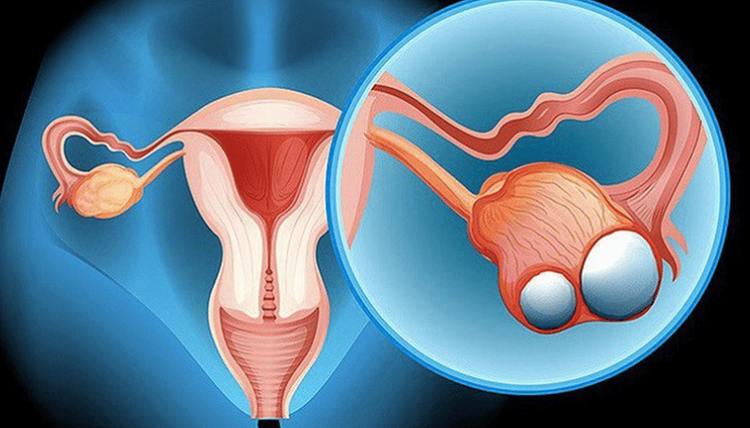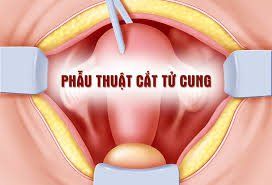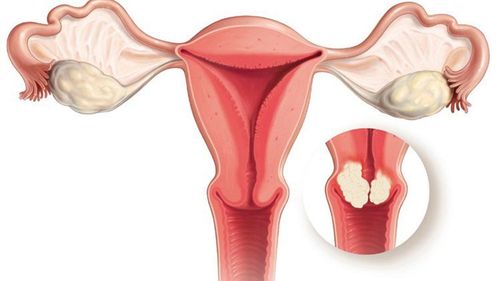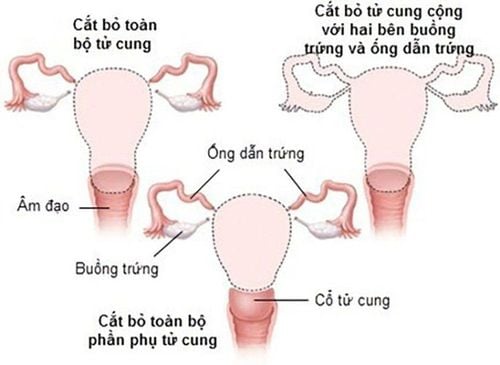This is an automatically translated article.
The article was professionally consulted with Specialist Doctor II Lai Thi Nguyet Hang - Obstetrician and Gynecologist - Department of Obstetrics and Gynecology - Vinmec Ha Long International General Hospital.Abdominal hysterectomy is one of the surgical treatments to remove part or all of the uterus, to treat symptoms such as prolonged menstrual cycles or certain gynecological conditions such as cystic fibrosis. uterine and ovarian cysts
1. Abdominal hysterectomy
A hysterectomy is a surgical treatment that removes part or all of the uterus. There are many methods of hysterectomy including: laparoscopic hysterectomy, transabdominal hysterectomy, vaginal hysterectomy,...Abdominal hysterectomy is a procedure hysterectomy through abdominal incision. At this time, the doctor will make a horizontal incision in the abdomen and bring the uterus out through the incision. A transabdominal hysterectomy should only be performed when the patient is unable to undergo surgery by other methods. Because this method has many disadvantages, patients will recover longer, bleed heavily and leave large scars.

2. Circumstances requiring a hysterectomy
2.1 In the case of a partial hysterectomy Injury to the uterine body Benign tumor in the body of the uterus Partial hysterectomy when the cervix is completely normal Postpartum uterine bleeding from other causes placenta (uterine atony, placental abruption, uterine rupture, placental intrauterine haemorrhage) Postpartum uterine infection, after the procedure, if hysterectomy is indicated. heart disease, high blood pressure ) is indicated for partial hysterectomy to leave the fetus intact in the uterus (whole hysterectomy) 2.2 Cases of total hysterectomy Most of the time in emergency obstetric surgery there are indications Partial hysterectomy, however, in some special cases, a complete hysterectomy must be indicated:Central placenta previa, placenta deeply adheres to the cervix, causing bleeding and constricting the hypogastric artery can't stop bleeding. Pregnancy in the cervix has miscarriage, bleeding, after intervention procedures such as stitches, heating without results. Infection after cesarean section has spread to the uterus that has been complicatedly torn. Some precancerous and cancerous diseases of the genitals (fallopian tubes, cervix, uterus, ovaries, placenta, older pregnancy...) Benign tumors in the uterus have only hysterectomy, but the cervix is not normal (benign lesion or cervical cancer is suspected).

3. Steps to perform a hysterectomy through the abdomen
Before surgery, the patient will be enema, personal hygiene, abdomen and vagina, bath with antiseptic solution. In addition, patients need to fast and fast for at least 8 hours before surgery. Medical staff prepare surgical instruments and medical records, surgical medical records as prescribed.Steps for transabdominal hysterectomy:
Before performing surgery, the patient should be under endotracheal anesthesia.
Stage 1: Open the abdominal wall Stage 2: Cut the ligaments Stage 3: Separation and resection of the peritoneum-bladder Stage 4: Cut the utero-sacral ligament and the posterior peritoneum. Stage 5: Pair of vascular pedicles into the uterus Stage 6: Vaginal resection Stage 7: Closing of the vagina Stage 8: Covering the pelvic peritoneum Stage 9: Closing the abdominal wall Some complications after transabdominal hysterectomy Possible complications include:
Hematoma formation Pelvic fossa or lower extremity venous occlusion Bladder fistula In summary, transabdominal hysterectomy has many disadvantages such as longer recovery time, heavy bleeding and leaving a large scar. Therefore, this method is only performed when the patient cannot perform other surgical methods. After surgery, the patient needs to be closely monitored to prevent complications, so when you see the patient appear abnormal signs, it is necessary to immediately notify the medical staff for timely intervention. .
In order to help customers detect and treat other gynecological diseases early, Vinmec International Hospital has a basic gynecological examination and screening package, helping customers detect early inflammatory diseases Easy, inexpensive treatment. Screening detects gynecological cancer (cervical cancer) early even when there are no symptoms.
Please dial HOTLINE for more information or register for an appointment HERE. Download MyVinmec app to make appointments faster and to manage your bookings easily.














